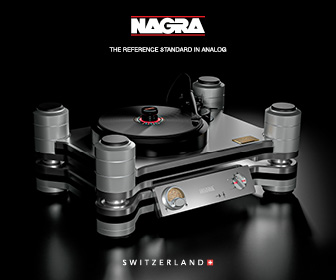Cantor Pierre Pinchik: “Rozo Deshabos” (78rpm; recorded 1928)
Archival audio restoration of perhaps the last surviving first-pressing 78rpm disc
I made a digital transfer of cantor Pierre Pinchik’s 1928 RCA-Victor electrical recording of his showpiece “Rozo Deshabos” (“The Mystery of Sabbath”) from a rare (and, quite possibly, the only surviving) 78rpm first pressing.
That first pressing had been donated, with no particular fanfare or fussing, to Brown University’s Music Library. (Victor 38-1006, blue label.) John Haley, of Harmony Restorations, kindly restored the audio for me.
I find “Rozo Deshabos” extremely interesting, in that it is culturally Sephardic, rather than Ashkenasi; the language is Aramaic, and not Hebrew or Yiddish; and, as far as I can tell, the text is Kabbalistic, rather than from the Five Books of Moses, or from the Old Testament Prophets or Writings. The Aramaic text is, in all likelihood, circa 800 years old.
I realize that, as the old saying used to go, much of the preceding paragraph will elicit the reaction “that’s Greek to me!” Therefore, I will try to give brief-but-adequate definitions.
“Sephardic” refers to the Jewish culture that flourished in future Spain and Portugal during the Muslim occupation (years 711 to 1492). The Muslims called that region al-Andalus. That name has traditionally been derived from the name of the Vandals.
Sephardic Jewish culture reached a high point around the year 1000. That said, there is some evidence of Jewish communities in Iberia as long ago as the first century of the Common Era. In 1492, Ferdinand and Isabella expelled the Jews from Spain. By the way, the vernacular language of Sephardic Jews is called Ladino.
“Ashkenasi” is a term for non-Iberian European Jewish culture. Upon the destruction of the Second Temple in Jerusalem by the Romans during the First Jewish-Roman War (66-74 CE), Jews were dispersed from their homeland. Some went to Central Asia; but most went to Europe.
In Europe, the language called “Yiddish” evolved by blending Hebrew with Medieval German. In the cases of both Ladino and Yiddish, the vernacular language evolved from a desire to set Hebrew aside for prayer and worship, and to have a distinct language for everyday household use.
“Aramaic” is a Northwest Semitic language approximately 3,000 years old, from ancient Syria. The scholarly consensus is that Jesus of Nazareth spoke Aramaic in daily life. The Aramaic alphabet is the ancestor of both the Hebrew and Arabic alphabets. Aramaic is still in use today, but it is mostly of historical significance. If you were to visit a Reform Judaism synagogue today, you would not likely hear any Aramaic spoken or chanted.
“Kabbalah” (which is the origin of our modern word “Cabal,” meaning a secret conspiracy) is a strain of Esoteric Jewish Mysticism that evolved in Spain and Southern France in the 12th and 13th centuries. The foundational text the Zohar dates from circa 1280; the original text was a mixture of Hebrew and Aramaic. Kabbalah delves into the nature of God, the origin and structure of the universe, the nature of the soul, and the possibility of redemption. Note well, the delving is both oracular, and obscure. Very obscure.
(If you want to do a deeper dive into any of these terms or concepts, Wikipedia is a good place to start.)
Back to “Rozo Deshabos.”
The text being cantillated speaks of a feminine entity “She” who enters into Capital-O Oneness with the Almighty, upon the coming of the Sabbath. Hence the title “The Mystery of Sabbath.” My rank-amateur take is that the feminine entity is a personification of the created world, when that creation reflects and reveals God's glory from within itself.
The idea of a feminine entity entering into Capital-O Oneness with the Almighty is not at all Capital-O Orthodox. It’s a more radical statement than any that is made about Lady Wisdom in the canonical OT Book of Wisdom. But, it seems to me that Kabbalah cannot be definitionally esoteric, while at the same time being mainstream.
“Pierre Pinchik” was a stage name; his birth name was Pinchas Segal (or Sigal). He was born in 1893 in Novozhyvotiv, which today is in central Ukraine; but back then it was part of the Russian Empire.
Pinchik had a fascinating life. Pinchik was born to a Hasidic family. He started his musical life as a synagogue choirboy in Ukraine. He then studied classical piano and voice at the Kiev Conservatory. He was conscripted into an Artist’s Brigade of the new Red Army, where he was tasked to write revolutionary Communist songs in Yiddish. He became a popular performer.
Pinchik also served as a cantor in Leningrad for a few years. It was in Leningrad that he developed his own musical style, because he decided that the prevailing German cantorial style was not suitable for his voice. He began by adding his own interpolations to repertoire classics by the 19th-century Berlin composer Lewandowski.
Pinchik then moved on, creating settings that were entirely his own, featuring dramatic quasi-recitatives. Pinchik was able to do those things because he was perhaps the only cantor of the so-called “Golden Age” with both a conservatory classical-music education, and success in writing popular songs.
In 1926 Pinchik toured the United States. He had been recommended to a promoter by the legendary operatic bass Feodor Chaliapin. Pinchik then pretty much reinvented himself as a superstar cantor. In 1928, RCA Victor offered Pinchik an exclusive recording contract. In addition to sacred music, Pinchik also recorded for Victor some folk songs, as well as popular songs he had written, such as his sentimental Yiddish song “A brief fun America” (“A Letter from America”).
Sources I consulted credit Pinchik with playing the organ as well as singing on Side A of this recording, which was made in RCA’s Camden, NJ recording facility. RCA had bought Trinity Baptist Church as a recording venue in 1918. In 1926, RCA had the Estey Organ Company enlarge and improve the organ, which was most famously recorded being played by Fats Waller, who, in his youth, had played the organ in Harlem’s Lincoln Theater, accompanying silent movies.
Pinchik’s 1928 “Rozo Deshabos” recording was later reissued twice on 78rpm discs, after Pinchik’s career really took off. First in 1938, as part of a 6-disc album The Golden Voices of Israel on Victor Records (Victor S-100). Then, in 1948, as a single re-release of Victor 38-1006 (black label). I can only think that the extreme rarity of the 1928 first pressing was a matter of Pinchik’s being a not-yet-familiar name.
I say that because, one might plausibly suppose that the Aramaic language and beyond-Esoteric text would have dampened sales of the “Rozo Deshabos” record among an audience made up mostly of English-speaking American Ashkenasi Jews.
But, I consulted with a few experts, and they did not think that the Sephardic/Kabbalistic/Aramaic aspects were consumer scare-offs. They thought that most people would simply listen to the singing, and not focus on the possible implications of the words.
Pinchik was apparently not interested in taking a permanent posting in a United States synagogue, preferring to travel as a guest artist. His “Rozo Deshabos” is generally regarded as having inspired something of a revolution in cantorial style, as well as inspiring imitators. In 1937, Pinchik became a naturalized American citizen. He lived to a ripe age, dying in 1971. He was the last surviving cantor of the “Golden Age.” He was buried in Boston.
Here's the cleaned-up audio:
A WORD FROM THE ARCHIVAL RESTORATION ENGINEER
By John H. Haley, Harmony Restorations LLC
This restoration from John Marks’ transfer of the 1928 RCA 78rpm record presented some interesting issues, mostly having to do with musical pitch. The two sides of the record, as presented, are not at the same pitch. The reason is that they were recorded several months apart. Furthermore, played at 78rpm, neither side is presented in any actual key; rather, “falling in the cracks.”
As the sides were recorded in a former New Jersey church with pipe organ accompaniment, we have reasonably good certainty that the organ was pitched correctly, so I used A = 440 as my guide. To anyone familiar with recorded voices, it is clear from the sound of Pinchik’s voice, that, at 78rpm, both sides are playing substantially sharp, although differently so.
That is, putting aside Pinchik’s personal sense of pitch that resulted in his drifting sharp on certain sustained notes in his upper middle range. No correction was applied there, because cantors are often, by definition, “pitch-benders,” using pitch variations as part of their art. Further, after pushing the pitch sharp on a particular note, Pinchik often resolves that note on the correct pitch by the note’s end.
After trying various keys, I settled on E Minor as the correct key for Side 1, and A-Flat Minor as the correct key for Side 2. These two keys most closely give us the “same voice” on both 78rpm sides. To my experienced ears, this resolution also gives us the best representation of a fine tenor voice belonging to a real human being. The tempos seem apt. After due consideration, I believe that these are the correct keys at which Pinchik was performing when the recordings were made.
I believe it would have been likely that when he performed this entire piece, which is of his own composition, there would have been a bridge between the music we hear on the two sides of the record, to smoothly modulate us from one key to the other. That is missing here, and there are no rational key decisions for the two sides that satisfactorily resolve this issue from a musical standpoint.
There is a clue in that the two best key choices for the first side are E Minor and F Minor, but it is unlikely that a trained tenor (as I was in younger years) would choose to sing a piece in F Minor with repeated sustained F’s above Middle C throughout the piece, as most tenors are more comfortable on either side of this infamous register break note. E minor is a much more comfortable key; also, Pinchik’s voice sounds most natural in that key.
Further, the chosen keys eliminate a peculiar, unnatural rapid vibrato that is heard when Pinchik is pitched a half step higher. A certain amount of distortion on the voice remains in this restoration. I have minimized that as much as possible, but without dulling the sound a lot to eliminate the distortion, which would damage the presence of Pinchik’s voice.
Note; for his transfer, John Marks used Rega’s 78rpm turntable and Rega’s mono 78rpm cartridge, and a Graham Slee phono stage with variable playback curves. The actual 78rpm record was not available, to experiment with stylus sizes and shapes other than Rega's 78rpm cartridge.
TEXT AND TRANSLATION:
Note: “Malchus” refers to one of the “Sefirot” of Kabbalistic cosmology. Sefirot are the Divine Emanations that make up the Kabbalistic “Tree of Life.” Malchus (or Malkuth) sits at the bottom of the Tree of Life and “governs the simple fact of existence in the physical world.” Malchus is the only one of the ten Sefirot that is characterized as female.
Kudsha b’rich Hu, Echod l’eilah, la y’siv al kursaya diyikarei,
Ad d’isavidas i’hi b’rozo d’echod k’gavna di’lei, l’mehevei echod b’echod.
V’ha u’kimna, rozo d’ “Ad-noi echod, u’shemo echod.”
Rozo d’Shabbos: i’hi Shabbos d’is’achodas b’rozo d’echod limishrei aloh rozo d’echod.
Tzlosa dima’alei shabata d’ha isachudas kursaiya yakira kadisha b’rozo d’echod, v’istakonas l’mishrei aloh malko kadisha i’la’ah.
Kad ayil shabata, i’hi isyachadas v’ispirashas misitra achara, v’chol dinin misabrin minah.
V’Ihi ishti’oras biyichuda dinhiru kadisha, [v’is’atras b’chama itrin ligabei malko kadisha.]
V’chol shultanei rugzin u’marei di’dinah, kulhu arkin v’isabru minah.
V’leis shultana achara b’chulhu olmin...
The Holy One, Blessed be He Who is One above, does not take His seat upon His throne of glory, until she [Malchus] enters the mystery of oneness, similar to His, to be oneness corresponding to Oneness.
This, as we have stated, is the esoteric meaning of the words “Hashem Echod U’shemo Echod.”
The mystery of Shabbos: She [Malchus] is, on Shabbos, united within the mystery of Oneness so that the [Supernal] Mystery of Oneness may rest upon her.
[This takes place during] the maariv prayer of Shabbos eve, for then the holy Throne of Glory merges into the Mystery of Oneness, and is ready for the holy transcendent king to rest upon it.
As Shabbos arrives, she merges into Oneness and is separated from the “other side,” and all strict judgments are severed from her.
And she remains in unity with the holy light, [and crowns herself with the many crowns for the holy king.]
Then, all powers of wrath and all adversaries flee from her and vanish
and no other power reigns in any of the worlds...
# # #
John Marks thanks Stephen T. Martorella, Ronnie Schreiber, and David Lewis Stokes, O.P. for their assistance in the preparation of this article.









































